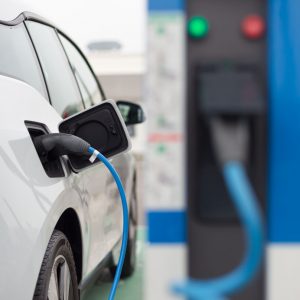Posted on January 28, 2020 at 5:52 am by Nigel Brokenshire
Beginner’s Guide to Electric Vehicles

I had a reminder from BeeMyMinder that my MOT was due. As I was sitting waiting for the MOT to be done, it got me wondering about electric cars and whether it’s beneficial to buy one. I know very little about them so did some research and here is a quick guide on electric vehicles in the UK.
The basics
They run on a lithium-ion battery which you can charge at home, or at a public or workplace charge point. There are three types of EV, the ‘pure EV’ (also known as a Battery EV or BEV) which runs solely on the battery, Plug-in Hybrid EVs (PHEVs) and Range-Extended EVs (RE-EVs) which also have a conventional diesel or petrol engine, allowing for a longer drive than with a battery alone.
In March 2016, when this article was originally published, 17,000 hybrid and electric cars left UK showrooms, with 70,000 drivers in total having made the transition to electric.
In 2019, the numbers changed drastically. There were over 265,000 plug-in cars on the road at the end of December 2019 and 8,700 plug-in vans. There were more than 72,700 electric cars sold in the year compared to 59,700 in 2018.
What about charging?
We have this view that EVs and PHEVs need charging all the time and from special outlets. In fact, electric cars can plug into your domestic 13amp power supply at home and with rapid charging units (43-50kW) they can be 80% charged in around 30 minutes.
There are over 30,000 charge points in the UK with an average distance of 3.77 miles between charging points. You can find the closest charging point to you here.
In London, there are 2,400 charging points with plans to expand it to 50,000 by 2025. Owners of electric vehicles can register for a scheme and find their nearest charging point by visiting www.sourcelondon.net.
What about distance?
Ok. My car has been charged but won’t it only go down to the local shops before I need to turn around and recharge? Not anymore. Currently, there are several EVs offering 250 miles on a full battery, with some models having ranges in excess of 350 miles on a full charge. In the UK most journeys average about 25 miles; In London, around 90% of all car trips are less than 10km, so almost all average day-to-day travelling can be done driving an electric vehicle.
What about running costs?
If you consider the average electricity price in the UK, assuming you’re charging your car at home, you pay around 14p per kWh. For an EV that goes 3.5 miles per kWh, you will spend £4 for 100 miles, or 4p per mile.
For the same distance, you would spend around £11 on petrol, giving you the economy of 11p per mile. Based on an annual mileage of 10,000 per annum, switching to electric could, therefore, save around £800 a year in fuel bills.
Is there assistance?
The government is keen to encourage more people to switch to electric vehicles. The main grant is the Plug-in Car Grant and Van Grants that subsidise the purchase of eligible cars by up to £3,500 for low-emission cars. Vans receive up to a maximum of £8,000. You can check out which electric cars and vans are eligible for the plug-in car and van grants at OLEV website.
The latest electric vehicle homecharge scheme can be found here. This sets out the Government incentive to pay up to 75% towards the cost of purchase and installation of a domestic charge point with an approved installer. This is capped at £500 for a home charge point. Trials have shown that 85% of electric vehicle users plug in and charge overnight at home or work rather than using public on-street charging points.
Are there other savings?
Starting from April 2020, company car drivers and fleet drivers will see significant tax benefits if they opt for an EV. There is no tax on Benefit in Kind (BiK) for the year 2020-21, and will increase to 1% in the year 2021-22, and 2% in 2022-23.
Drivers requiring access to the London Congestion Charge Zone in an electric vehicle can save £11.50 per day. It’s free. Some London boroughs offer free or reduced-charge parking as well.
Employers who provide low emissions electric and plug-in hybrid vehicles to employees pay less NICs National Insurance:
Summary
Buying an electric vehicle provides that ‘feel good’ factor as you know you are helping with the environment. There are excellent cost savings to be made, considering that you’ll get free parking when you’re charging in a public area. With more advances year on year, it can be appealing; Go Ultra Low (a Government-backed initiative to promote electric cars) predicts that over half the cars sold in the UK by 2027 will be electric.
The main drawback is the cost of purchase with small models starting at £20,000. However, considering that in the UK we have a quarter of Europe’s electric vehicle production and a fifth of all sales I’m sure the purchase prices will drop.
With companies like Uber investing in electric vehicles, the future looks exciting for the electric vehicle market and can only go from strength to strength.
Comparison sites also allow you to compare prices for electric and hybrid car insurance, to save you even more money, like GoCompare.
If you have an electric vehicle story please do share.

